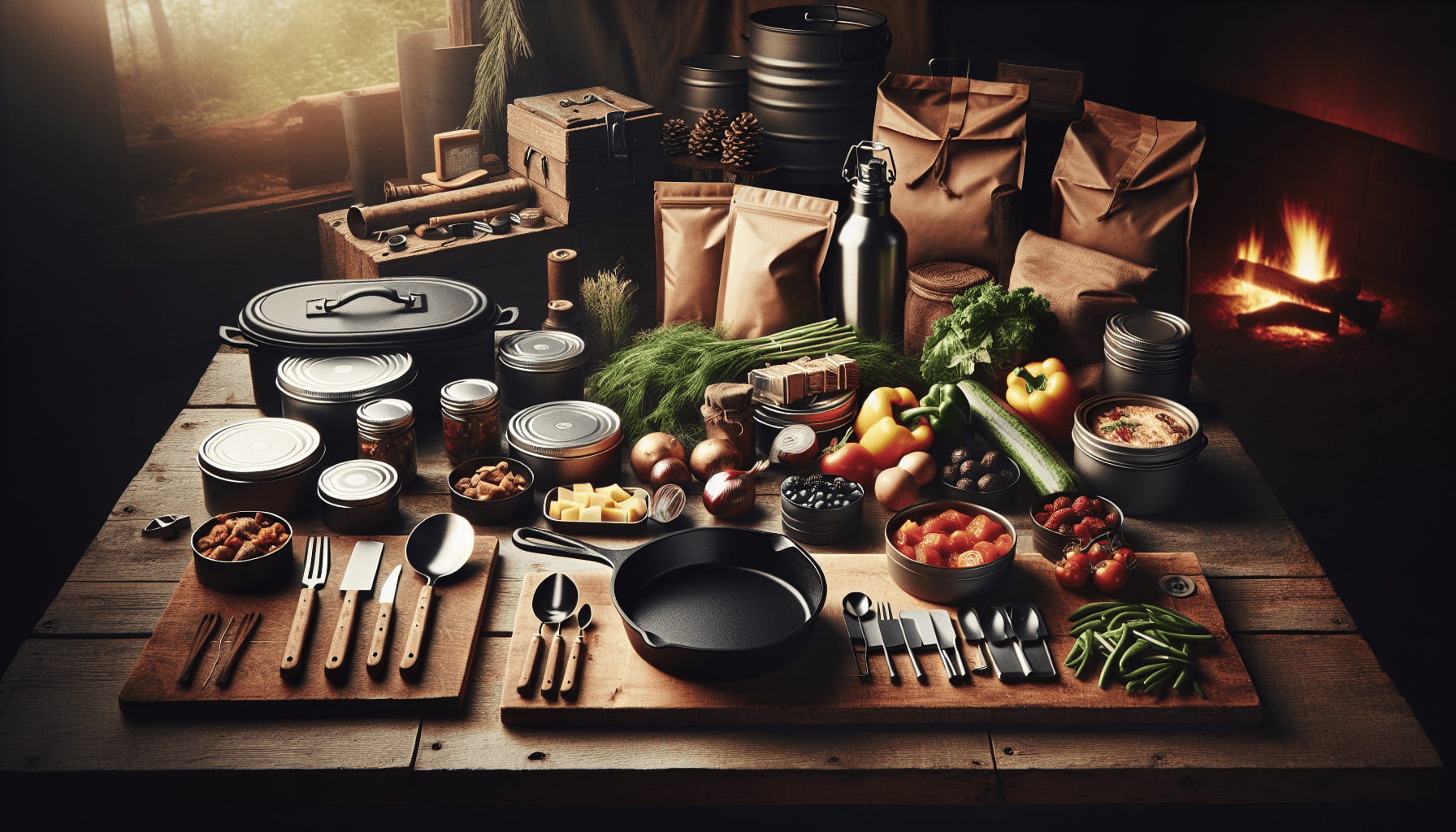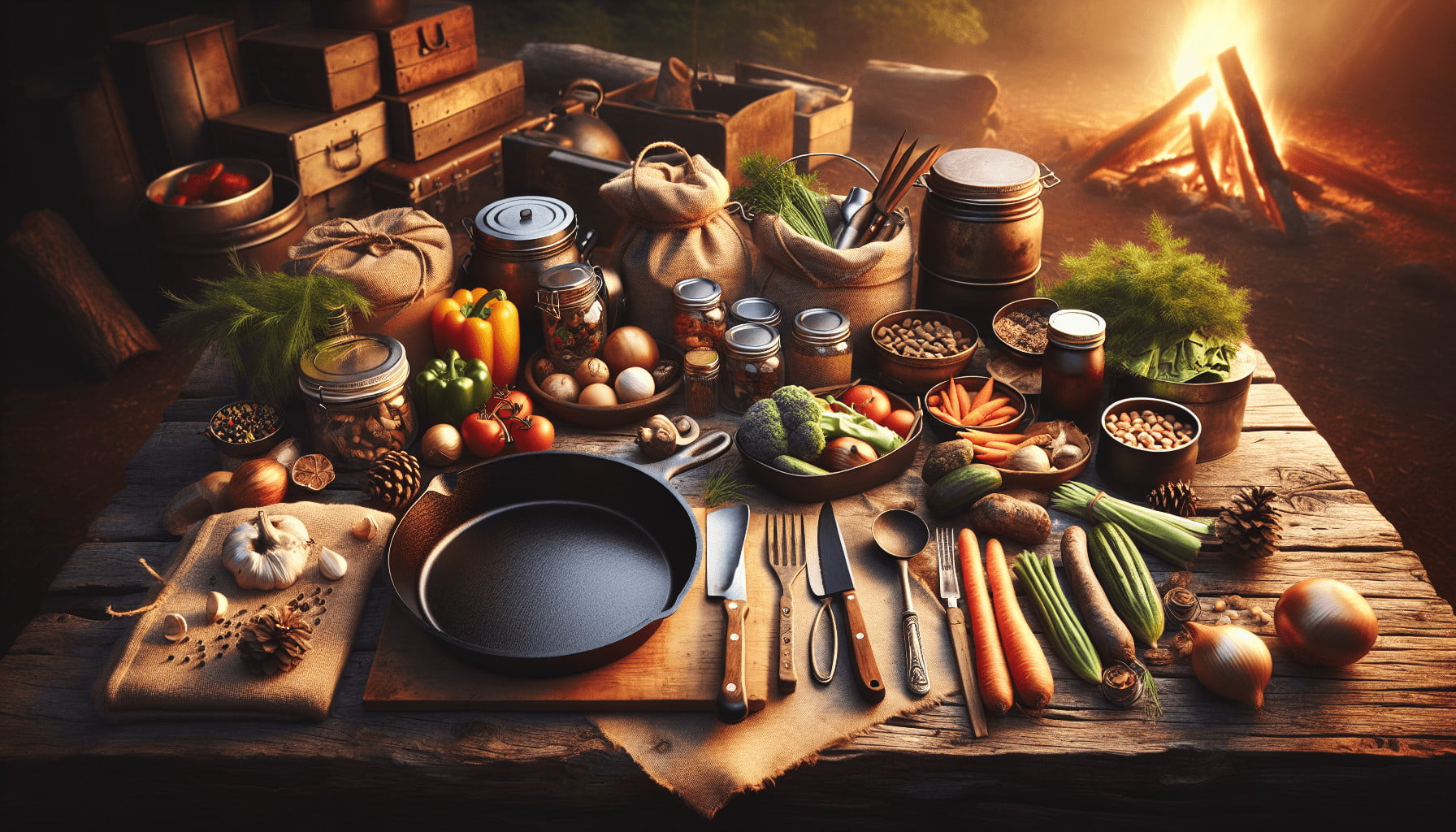Ready to elevate your campfire cooking game? In “How To Pack And Store Food For Campfire Cooking,” you’ll discover practical tips and insider tricks to make sure your food stays fresh and organized from the moment you leave home until you’re savoring that delicious meal by the fire. This guide covers everything from selecting the right containers and packing materials to smart cooling techniques and safety practices. By the end, you’ll be a pro at preparing, packing, and storing food that’ll make your next camping trip both tasty and hassle-free. Have you ever been excited about a camping trip, only to realize you have no idea how to pack and store food for campfire cooking? You’re not alone. When the great outdoors calls, and you’re ready to cook over an open flame, the key to a successful culinary adventure lies in proper preparation and storage. Whether you’re a seasoned camper or a newbie looking to get it right on your first try, this guide will help you master the art of packing and storing food for campfire cooking.
Understanding Your Needs
Before diving into the logistics of packing and storing food, you need to assess your needs. This begins with understanding the nature of your trip.
Duration of Your Trip
Are you heading out for a weekend or an entire week? The length of your camping trip significantly impacts how much food you need to bring and how you’ll store it. For a short trip, you might get away with simpler storage methods. However, longer trips require more detailed planning to keep your food fresh and safe.
Number of People
Cooking for yourself is much different than cooking for a group. Think about how many people you’ll be feeding. More people mean more food, and more food means more meticulous packing and storage strategies.
Type of Camping
Are you car camping, backpacking, or going for a glamping experience? Each type has its own set of conveniences and limitations. If you have access to a car, you can bring a cooler and more perishable items. Backpacking requires lightweight, non-perishable options.
Packing Essentials
Having the right supplies can make or break your campfire cooking experience. Here’s a detailed list of packing essentials you should consider:
Cooler Options
Getting the right cooler is crucial, especially if you have perishables. Not all coolers are created equal.
| Type | Pros | Cons |
|---|---|---|
| Soft-Sided Cooler | Lightweight, easy to carry | Less insulation, shorter cooling time |
| Hard-Sided Cooler | Superior insulation, durable | Heavy, bulkier |
| Electric Cooler | Can keep items cool indefinitely | Requires power source, expensive |
Food Containers
Opt for containers that are durable, leak-proof, and preferably stackable. Mason jars are great for sauces and pre-marinated items, while plastic or silicone containers work well for dry goods and snacks.
Cooking Tools
You don’t want to be without the essentials when you’re out in the wild. Here’s a quick checklist of must-haves:
- Cast iron skillet
- Long-handled tongs
- Heat-resistant gloves
- Aluminum foil
- Fire starters or matches
- Pots and pans with lids
Zip-Lock Bags and Vacuum Seals
Plastic zip-lock bags are lifesavers when it comes to organizing food items and keeping them fresh. For a longer shelf life, consider vacuum-sealed bags.

Food Selection
Choosing what food to bring is half the battle. Let’s break it down into categories.
Perishables
If you can’t live without certain perishables like fresh meat, dairy, and certain vegetables, here’s how to make it work:
- Pre-Freezing: Freeze these items before packing them. They’ll act like additional ice packs in your cooler.
- Keep Them at the Bottom: Perishables should go at the bottom of your cooler, surrounded by ice packs or ice.
Non-Perishables
These are your best friends when camping. Canned foods, nuts, dried fruits, and jerky are all excellent choices. They don’t need refrigeration and are usually high in nutrients, giving you the energy boost you’ll need for outdoor activities.
Fresh Produce
While it may seem challenging to keep fruits and veggies fresh, there are ways around it. Root vegetables like potatoes and carrots, fruits with tough skins like apples, and hearty greens like kale and cabbage tend to last longer without refrigeration.
Snacks and Convenience Foods
Granola bars, trail mix, and even instant noodles can be lifesavers. They’re easy to pack and can be eaten with minimal preparation.
Meal Planning
The key to a successful campfire cooking experience is effective meal planning. Think about each meal you’ll prepare and aim for versatility.
Breakfast
Breakfast can be as simple or as elaborate as you want.
- Oatmeal: Easy to carry and prepare, just add hot water.
- Eggs and Bacon: Store eggs in a hard-sided container to prevent breakage.
- Pancakes: Bring pre-mixed batter in a zip-lock bag—cut a corner and pour onto your cooking pan.
Lunch
Lunch should be quick so you can get back to your activities.
- Sandwiches: Bring a variety of spreads and canned fish or meats.
- Wraps: Tortillas are more durable than bread.
- Leftovers: Last night’s dinner can often be repurposed.
Dinner
Dinner is where you can get creative with campfire cooking.
- Skewers: Easy to prepare and versatile. Mix veggies and protein on a stick.
- Foil Packets: Pre-prepare packets with sliced veggies, herbs, and protein.
- One-Pot Meals: Think stews and chilis, which are easy to make on a camp stove or over a fire.
Snacks
Never underestimate the importance of snacks.
- Trail Mix: Make your own mix to include your favorite nuts and dried fruits.
- Jerky: High in protein and easy to store.
- Fruits: Apples, bananas, and oranges are excellent choices.

Storing Your Food
Now that you’ve packed your food, you need to think about storage, especially when it comes to safety.
Bear-Proofing
If you’re heading into bear country, storing your food properly isn’t just a recommendation—it’s a necessity.
| Method | Pros | Cons |
|---|---|---|
| Bear Canisters | Sturdy, bear-resistant | Bulky and heavy |
| Bear Bags and Hangs | Lightweight, easy to carry | Requires finding a suitable tree |
Location
Store your food at least 100 yards away from your sleeping area. This will keep curious animals away from your tent. If possible, hang food bags from a tree branch that’s at least 10 feet off the ground.
Cooler Management
Keep your coolers in the shade and cover them with a wet towel to boost their cooling efficiency. Open them as infrequently as possible to maintain internal temperatures.
Dry Food Storage
Use water-resistant containers to store dry foods. Even a surprise rainstorm won’t ruin your snacks and staples if they’re packed properly.
Waste Management
Leave no trace isn’t just a saying—it’s an ethic. Proper waste management is crucial.
Packing Out Waste
Anything you bring in, you should be prepared to pack out. This includes food scraps, cans, paper towels—everything.
Minimalist Cooking
Try and prepare foods that don’t generate a lot of waste. The less packaging you bring, the less you’ll need to dispose of.
Composting Options
If you’re in a location that allows for composting, separate your biodegradable waste from other trash. A small compost bag can be a lifesaver.
Conclusion
Packing and storing food for campfire cooking doesn’t have to be daunting. With a little planning and the right tools, you can create memorable, delicious meals in the great outdoors. Start by assessing your trip needs and packing essentials, then move on to smart food selection and efficient storage. Remember, safety first—especially in bear country—and always manage your waste responsibly. Happy camping and even happier cooking!
